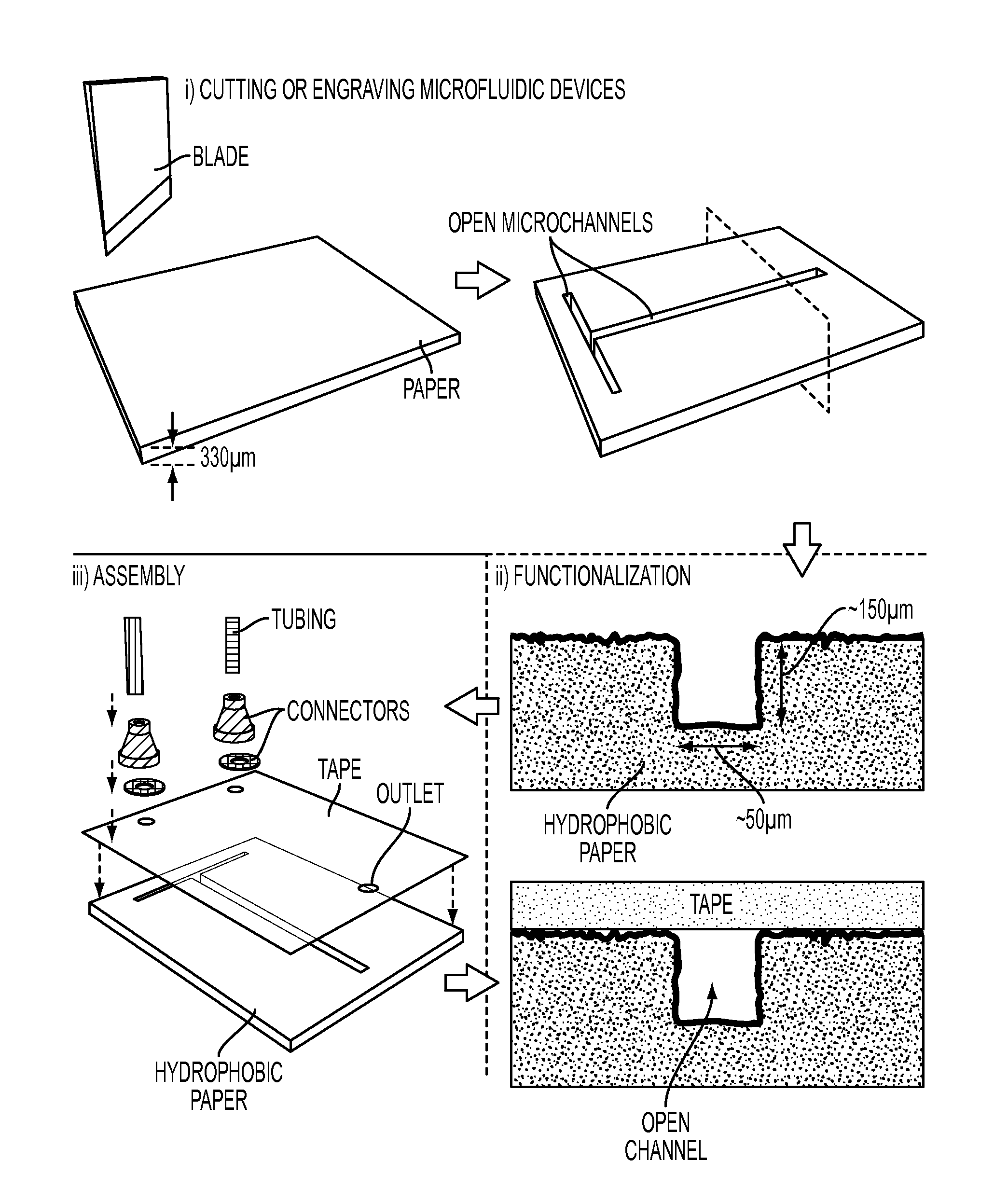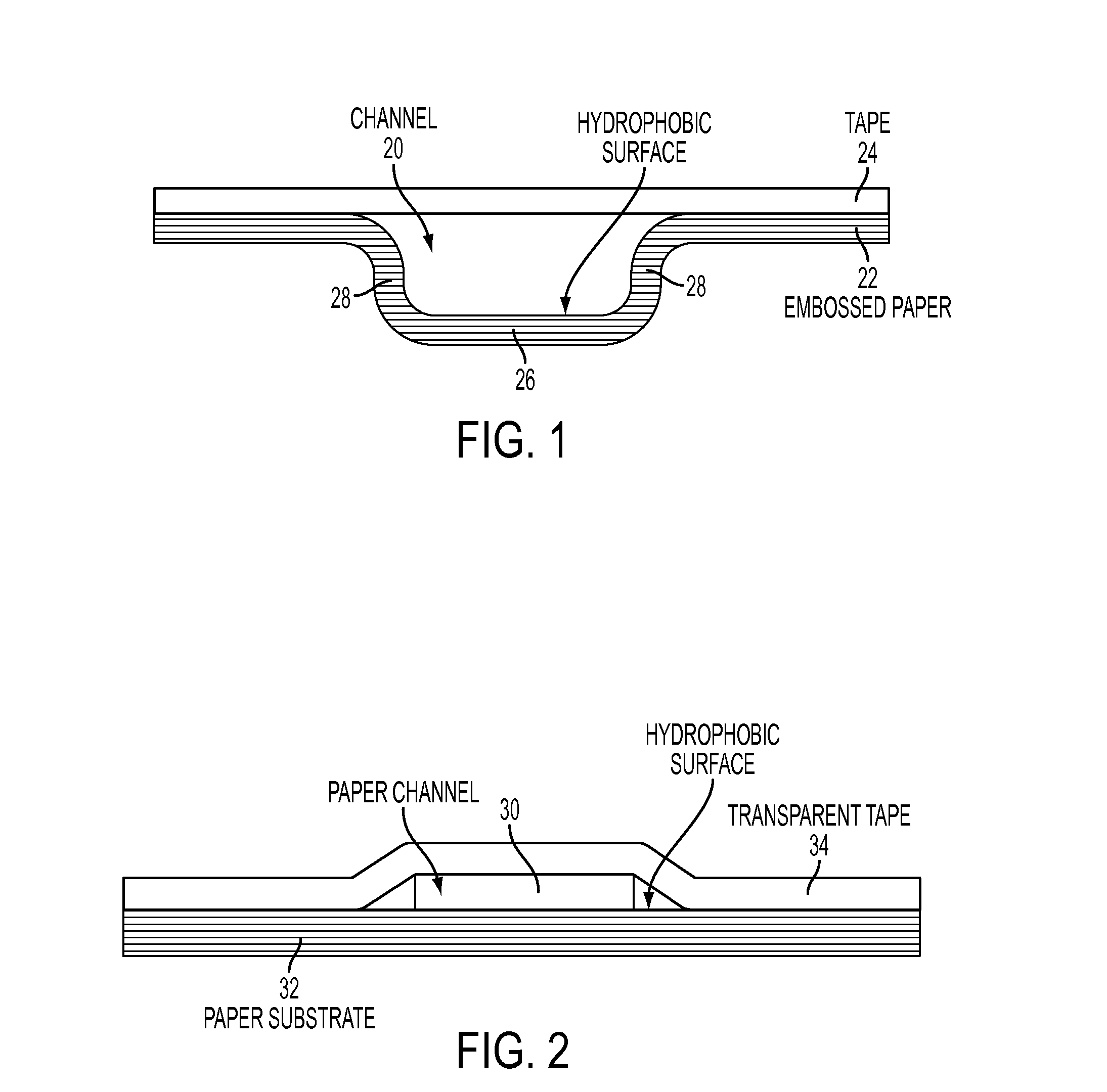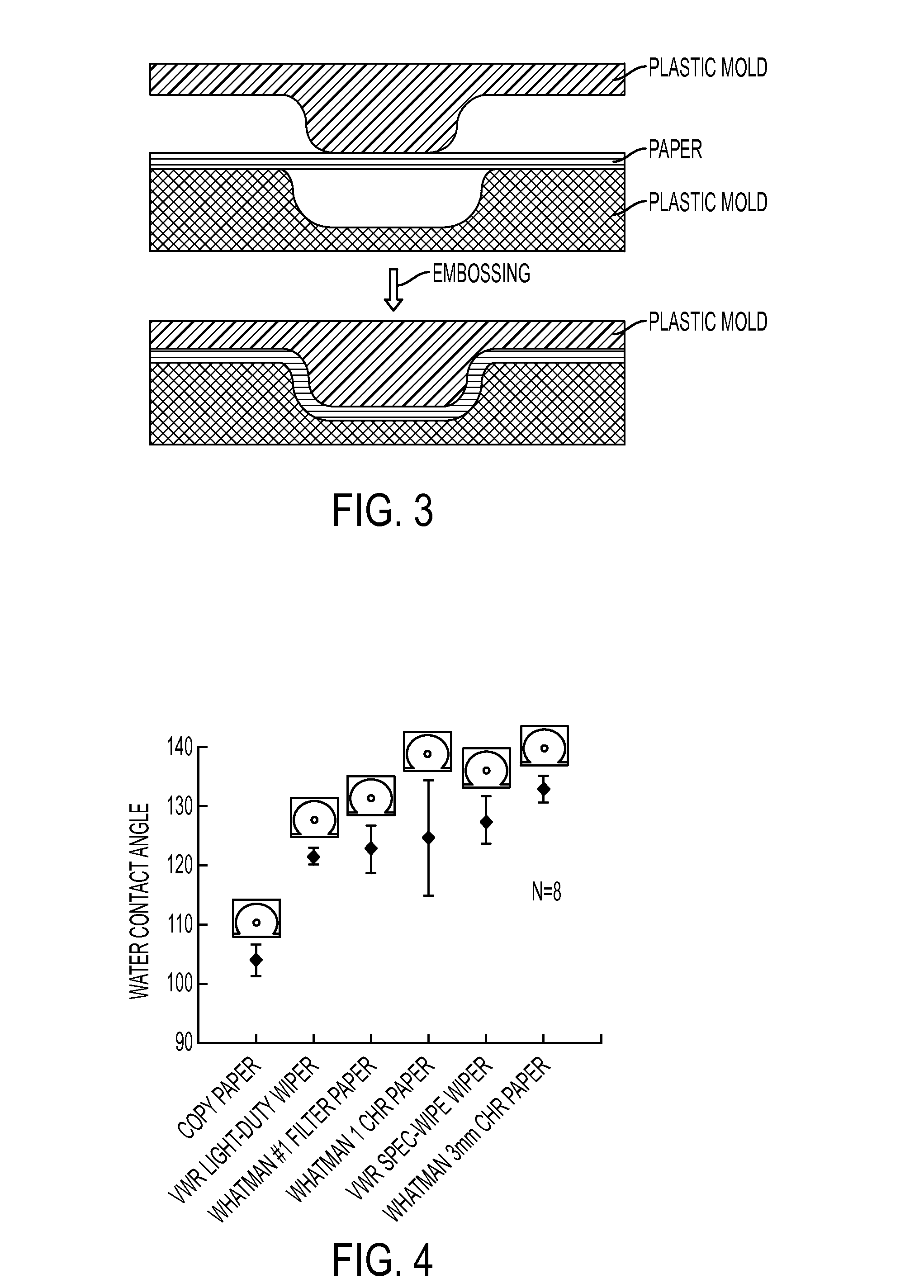Microfluidic Devices Formed From Hydrophobic Paper
a technology of hydrophobic paper and microfluidic devices, which is applied in the field of microfluidic devices, can solve the problems of inefficient delivery of samples within the device, and achieve the effect of improving the efficiency of sample delivery
- Summary
- Abstract
- Description
- Claims
- Application Information
AI Technical Summary
Benefits of technology
Problems solved by technology
Method used
Image
Examples
example 1
Covalent Modification of Paper to Increase Hydrophobicity
[0284]Paper was covalently modified to increase its hydrophobicity. The paper surface can be rendered hydrophobic by reaction of the paper (cellulose) fibers with appropriate hydrophobic moieties (e.g., silanization with alkyl and / or fluoroalkyl trichlorosilanes, acylation with hydrophobic groups, or combinations thereof). By using different types of chemical reactions to introduce fluorinated and non-fluorinated groups, the hydrophobicity of the paper surface can be increased.
[0285]Procedure and Result
[0286]Hydrophobic Paper
[0287]To render paper hydrophobic, the hydroxyl groups of the paper cellulose fibers were functionalized with (tridecafluoro-1,1,2,2-tetrahydrooctyl)trichlorosilane vapor. This reaction forms surface silanol linkages, and renders the paper surface hydrophobic, as shown in Scheme 1A. Six types of paper were silanized with (tridecafluoro-1,1,2,2-tetrahydrooctyl)trichlorosilane vapor, and the hydrophobicity o...
example 2
Fabrication of Open Channel Microfluidic Devices from Hydrophobic Paper by Embossing
[0301]An open channel microfluidic device was constructed by embossing open microchannels on Whatmann #1 filter paper.
[0302]An exemplary strategy for forming open channels via embossing is illustrated in FIG. 3. Two polymeric dies of complementary shape and appropriate design were fabricated using a 3D printer. An open channel microfluidic device was then fabricated by sandwiching a sheet of Whatmann #1 filter paper, and applying pressure. Following formation of the open channel, the paper was silanized by reaction with perfluorooctyl trichlorosilane (FOTS) vapor.
[0303]Scotch® tape was then applied to the surface of the cellulosic substrate, sealing the open channel. Holes were cut through the Scotch® tape cover at the origin of each embossed channel, and inlet tubes, supported by a small amount of PDMS, were inserted to form fluid inlets.
[0304]FIGS. 6A-6C show three different open channel microfluid...
example 3
Fabrication of Open Channel Microfluidic Devices from Hydrophobic Paper by Carving / Engraving
[0305]Open channel microfluidic devices were also constructed by carving open microchannels on cardstock (approximately 300 microns in thickness).
[0306]An exemplary strategy for forming open channels via carving is illustrated in FIG. 7. Open microfluidic channels were first designed using computer-assisted design software (Adobe® Illustrator® CS5, Adobe Systems Incorporated). A digital craft cutter (Silhouette Cameo™) was used to carve the open channels into the surface of the cardstock paper substrate (FIG. 7, panel i).
[0307]In some instances, the cardstock was then covalently modified (panel ii) by reaction with tris(dimethylamino)silane. Tris(dimethylamino)silane was selected because it is very volatile, fluorine-free, and undergoes a very fast reaction with the hydroxyl groups of cellulose to render paper hydrophobic, as illustrated in Scheme 2.
[0308]Silanization with tris(dimethylamino)...
PUM
| Property | Measurement | Unit |
|---|---|---|
| contact angle | aaaaa | aaaaa |
| contact angle | aaaaa | aaaaa |
| width | aaaaa | aaaaa |
Abstract
Description
Claims
Application Information
 Login to View More
Login to View More - R&D
- Intellectual Property
- Life Sciences
- Materials
- Tech Scout
- Unparalleled Data Quality
- Higher Quality Content
- 60% Fewer Hallucinations
Browse by: Latest US Patents, China's latest patents, Technical Efficacy Thesaurus, Application Domain, Technology Topic, Popular Technical Reports.
© 2025 PatSnap. All rights reserved.Legal|Privacy policy|Modern Slavery Act Transparency Statement|Sitemap|About US| Contact US: help@patsnap.com



